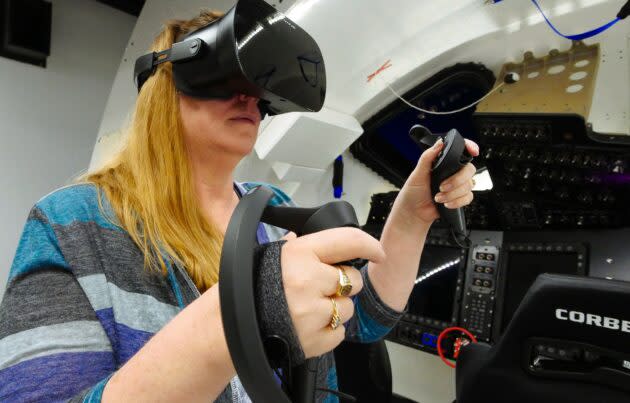Boeing teams up with Varjo on virtual reality training for Starliner space taxi

Boeing isn’t due to start flying NASA crews to the International Space Station until next year, but in the meantime, astronauts can steer a computer-generated Starliner space taxi with the aid of Varjo’s virtual-reality headsets.
Flnland-based Varjo announced today that Boeing will use its VR-2 headsets to augment more traditional simulator sessions in preparation for Starliner’s first crewed flight. Starliner is designed with the capability of flying itself, but the craft is also equipped with a joystick and other controls in case astronauts have to take manual control.
Astronauts can use the virtual-reality system to rehearse an entire mission — from pre-launch to docking, and from undocking to landing. Varjo’s VR system allows the astronauts to train remotely without having to go to a fixed-site simulator. They can even train in their quarters during the two-week pre-launch quarantine period.
Varjo VR-2 isn’t the only extended-reality system that’s been used for aerospace applications: Microsoft’s HoloLens augmented-reality headset has come into play on the space station as well as in Boeing manufacturing facilities down on Earth.
More from GeekWire:
Boeing’s Starliner space taxi fails to reach its intended orbit for first space station trip
NASA and Boeing trace roots of Starliner’s bad timing — and prepare for landing
Boeing bounces back with successful test of Starliner space taxi’s propulsion system
NASA and Boeing lay out time frame for reviewing Starliner’s flawed flight and planning next steps

 Yahoo Finance
Yahoo Finance 